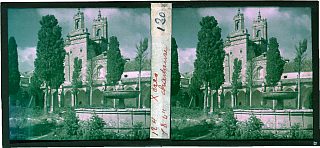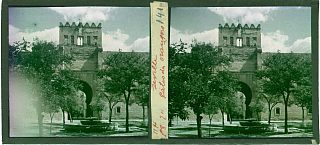

| Early Color Stereo Photography - Autochromes |
Autochrome images were invented in 1907 by the Lumière brothers. In 1904, the brothers Auguste and Louis Lumière patented the fist commercially successful color photography process.
The process is based upon the fact that color vision is based on the three primary colors red, green and blue. These are called the "additive" primaries, which are different from the "subtractive" primaries used in printing: yellow, magenta (purple) and cyan (blue-green).
The Lumière Autochrome plates are coated with a filter layer consisting of red, green and blue starch grains.
These starch grains are approx. 1/40 mm (1/1000
inch) in diameter. They act as tiny color filters during the exposure of the
plate. The image is reversal processed, yielding a positive image. When the
plate is seen in transmitted light, the three-color filter layer re-creates
the color image. However, due to the filters, the image is very dark.
 |
| Autochrome
images, 1929. Top: Jerez de la Frontera (Spain) Bottom: Sevilla (Spain) |
 |
 |
|

| Back to the Stereoscopy.com FAQ Page |
